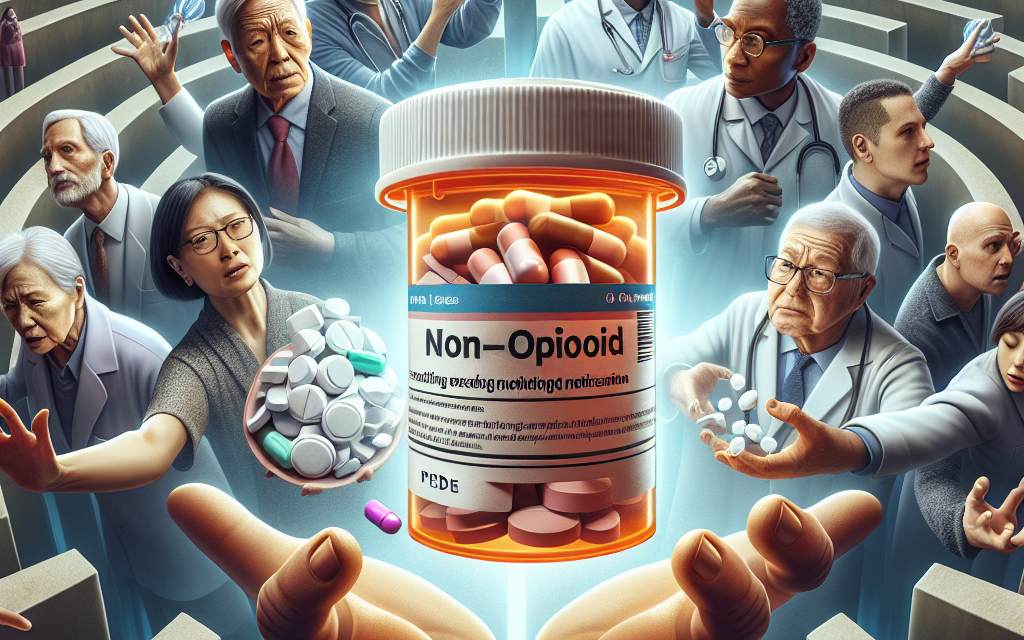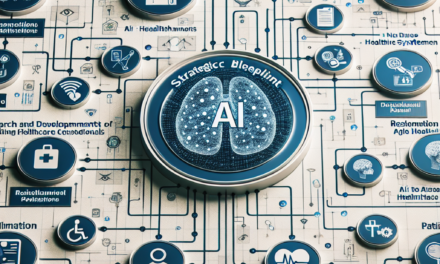A Breakthrough Non-Opioid Pain Medication: The Challenge of Patient Access
In recent years, the opioid crisis has highlighted the urgent need for effective pain management solutions that do not rely on addictive substances. As researchers and pharmaceutical companies strive to develop non-opioid pain medications, the challenge of ensuring patient access to these breakthroughs has emerged as a critical issue. This article explores the landscape of non-opioid pain medications, the barriers to patient access, and the implications for healthcare providers and patients alike.
The Landscape of Non-Opioid Pain Medications
The search for non-opioid alternatives to manage pain has gained momentum due to the alarming rise in opioid prescriptions and the subsequent addiction crisis. Non-opioid pain medications encompass a variety of drug classes, including nonsteroidal anti-inflammatory drugs (NSAIDs), acetaminophen, and newer agents like nerve growth factor inhibitors and cannabinoid-based therapies.
1. Understanding Non-Opioid Pain Medications
Non-opioid pain medications are designed to alleviate pain without the risk of addiction associated with opioids. These medications can be classified into several categories:
- Nonsteroidal Anti-Inflammatory Drugs (NSAIDs): Commonly used for mild to moderate pain, NSAIDs like ibuprofen and naproxen work by reducing inflammation and blocking pain signals.
- Acetaminophen: Often used for headaches and minor aches, acetaminophen is effective for pain relief but does not have anti-inflammatory properties.
- Nerve Growth Factor Inhibitors: Medications like tanezumab target nerve growth factor, a protein involved in pain signaling, offering a novel approach to pain management.
- Cannabinoid-Based Therapies: With the legalization of medical cannabis in many regions, cannabinoid-based treatments are being explored for their analgesic properties.
- Antidepressants and Anticonvulsants: Certain medications originally developed for depression or epilepsy, such as duloxetine and gabapentin, have shown efficacy in treating chronic pain conditions.
Each of these categories presents unique mechanisms of action, benefits, and potential side effects, making them suitable for different types of pain and patient populations.
2. Recent Breakthroughs in Non-Opioid Pain Management
Recent advancements in non-opioid pain medications have led to the development of innovative therapies that promise to change the landscape of pain management. For instance, tanezumab, a nerve growth factor inhibitor, has shown significant promise in clinical trials for treating osteoarthritis and chronic pain conditions. In a study published in the journal JAMA, tanezumab demonstrated a substantial reduction in pain scores compared to placebo, leading to its approval for use in certain patient populations.
Another noteworthy development is the use of cannabinoid-based therapies. Research has indicated that cannabinoids can effectively manage pain associated with conditions like multiple sclerosis and neuropathic pain. A systematic review published in BMJ found that patients using cannabis for chronic pain reported significant improvements in pain relief and quality of life.
These breakthroughs represent a shift towards more targeted and effective pain management strategies, but they also raise questions about accessibility and affordability for patients.
Barriers to Patient Access
Despite the promising developments in non-opioid pain medications, several barriers hinder patient access to these treatments. Understanding these challenges is crucial for healthcare providers, policymakers, and patients alike.
1. Cost and Insurance Coverage
One of the most significant barriers to accessing non-opioid pain medications is the cost associated with these treatments. Many breakthrough medications, particularly newer agents like tanezumab, come with high price tags that can be prohibitive for patients without adequate insurance coverage.
Insurance companies often have strict formularies that dictate which medications are covered, and many non-opioid options may not be included. This can lead to situations where patients are forced to choose between effective pain management and financial stability. A study by the Kaiser Family Foundation found that nearly 30% of Americans reported not filling a prescription due to cost, highlighting the impact of financial barriers on medication access.
2. Regulatory Hurdles and Approval Processes
The regulatory landscape for new medications is complex and can delay patient access to innovative treatments. The U.S. Food and Drug Administration (FDA) and other regulatory bodies require extensive clinical trials to ensure the safety and efficacy of new drugs. While this process is essential for patient safety, it can take years for a new medication to reach the market.
For instance, tanezumab faced delays in its approval process due to concerns about potential side effects, including joint destruction in some patients. Although the drug has since received approval, the lengthy review process can hinder timely access for patients in need of effective pain management solutions.
3. Provider Education and Awareness
Healthcare providers play a crucial role in prescribing non-opioid pain medications, yet many may lack awareness or knowledge about these newer treatments. A survey conducted by the American Academy of Pain Medicine found that a significant percentage of providers felt inadequately trained to prescribe non-opioid alternatives effectively.
This lack of education can lead to a reliance on traditional opioid prescriptions, perpetuating the cycle of addiction and limiting patient access to safer alternatives. Continuing medical education programs and resources are essential to equip providers with the knowledge they need to make informed prescribing decisions.
4. Patient Awareness and Advocacy
Patients themselves may not be aware of the non-opioid options available to them. Many individuals still associate pain management primarily with opioids, leading to a lack of exploration of alternative therapies. Patient advocacy groups play a vital role in raising awareness about non-opioid pain management options and empowering patients to discuss these alternatives with their healthcare providers.
For example, organizations like the American Chronic Pain Association provide resources and support for patients seeking information about non-opioid treatments. By fostering a culture of awareness and advocacy, patients can become more informed participants in their pain management journey.
5. Socioeconomic Disparities
Socioeconomic factors significantly impact patient access to non-opioid pain medications. Individuals from lower-income backgrounds may face additional barriers, including limited access to healthcare services, lack of insurance coverage, and transportation challenges. These disparities can result in unequal access to effective pain management solutions.
A report from the National Institutes of Health (NIH) highlighted that individuals in underserved communities are less likely to receive adequate pain management, often relying on emergency services for relief. Addressing these disparities requires a multifaceted approach that includes policy changes, community outreach, and increased funding for healthcare services in underserved areas.
Implications for Healthcare Providers
The challenges surrounding patient access to non-opioid pain medications have significant implications for healthcare providers. Understanding these implications is essential for delivering effective and equitable care.
1. The Role of Multidisciplinary Care
Healthcare providers must adopt a multidisciplinary approach to pain management that incorporates various treatment modalities. This may include physical therapy, psychological support, and complementary therapies alongside non-opioid medications. By addressing pain from multiple angles, providers can enhance patient outcomes and reduce reliance on opioids.
For instance, a study published in The Journal of Pain found that patients who received multidisciplinary care reported greater improvements in pain levels and overall quality of life compared to those receiving standard care. This approach not only improves patient outcomes but also fosters a more comprehensive understanding of pain management among providers.
2. Importance of Patient-Centered Care
Patient-centered care is crucial in addressing the unique needs and preferences of individuals experiencing pain. Providers should engage in open discussions with patients about their pain management options, including non-opioid alternatives. This collaborative approach empowers patients to make informed decisions about their treatment plans.
For example, a patient with chronic back pain may benefit from a combination of physical therapy, cognitive-behavioral therapy, and non-opioid medications. By involving patients in the decision-making process, providers can tailor treatment plans that align with individual goals and preferences.
3. Advocacy for Policy Change
Healthcare providers have a responsibility to advocate for policy changes that improve patient access to non-opioid pain medications. This may involve collaborating with professional organizations, participating in advocacy campaigns, and engaging with policymakers to address barriers to access.
For instance, providers can advocate for insurance reforms that expand coverage for non-opioid treatments, ensuring that patients have access to the medications they need without facing financial hardship. By leveraging their expertise and influence, healthcare providers can drive meaningful change in the healthcare system.
4. Continuous Education and Training
Ongoing education and training are essential for healthcare providers to stay informed about the latest advancements in non-opioid pain management. This includes understanding the mechanisms of action, potential side effects, and appropriate prescribing practices for new medications.
Participating in continuing medical education (CME) programs, attending conferences, and engaging in peer discussions can help providers enhance their knowledge and skills in non-opioid pain management. By staying informed, providers can offer the best possible care to their patients.
5. Building Collaborative Networks
Collaboration among healthcare providers, including primary care physicians, pain specialists, physical therapists, and mental health professionals, is essential for effective pain management. Building networks that facilitate communication and coordination of care can enhance patient access to non-opioid treatments.
For example, a collaborative care model that includes regular case discussions among providers can lead to more comprehensive treatment plans and improved patient outcomes. By working together, healthcare providers can ensure that patients receive holistic and effective pain management solutions.
Conclusion: Bridging the Gap in Patient Access
The development of breakthrough non-opioid pain medications represents a significant advancement in pain management, offering hope to millions of individuals suffering from chronic pain. However, the challenge of patient access remains a critical issue that must be addressed to fully realize the potential of these innovative treatments.
By understanding the barriers to access, including cost, regulatory hurdles, provider education, patient awareness, and socioeconomic disparities, stakeholders can work collaboratively to create solutions that improve access to non-opioid pain medications. Healthcare providers play a vital role in advocating for policy changes, adopting patient-centered care approaches, and building collaborative networks to enhance patient access.
As we move forward, it is essential to prioritize patient access to non-opioid pain medications, ensuring that individuals have the tools they need to manage their pain effectively and safely. By bridging the gap in access, we can pave the way for a future where effective pain management is available to all, free from the burdens of addiction and stigma.





